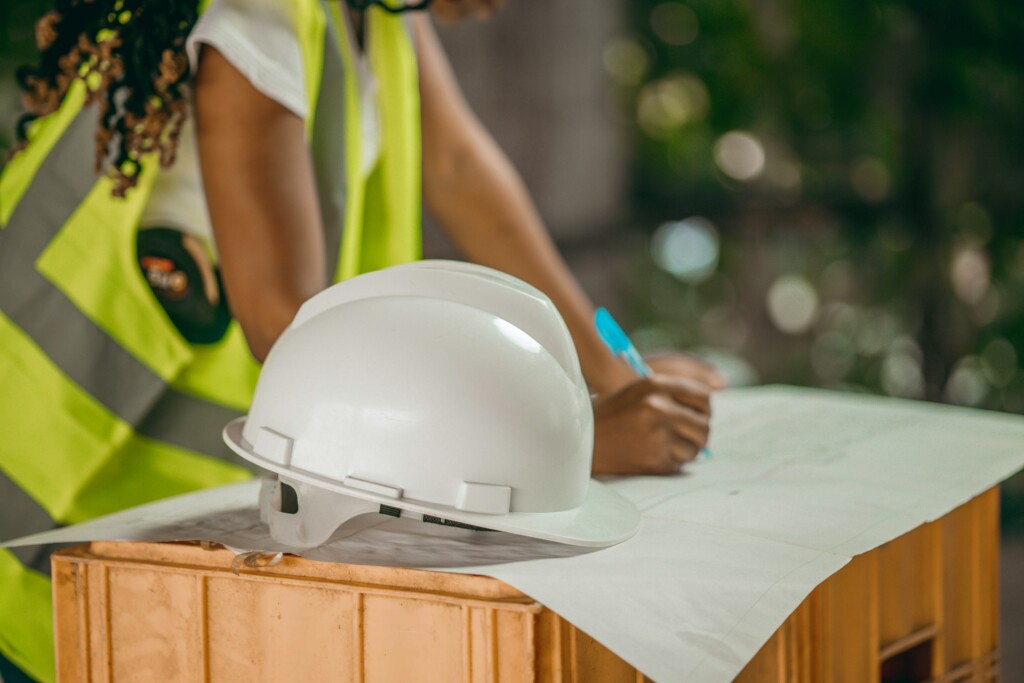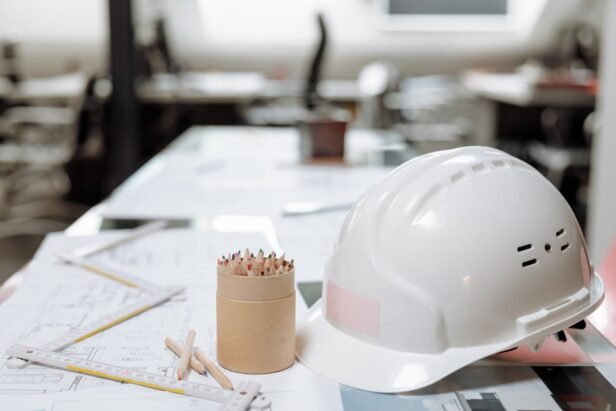Can a proposed development survive Austin’s construction market? A commercial construction feasibility study tests this critical question by evaluating whether a project makes financial and operational sense before we begin design work. This analysis connects market realities with construction costs and project goals to determine viability.
Market analysis defines the supply and demand balance for a specific property use at a given price point. Feasibility analysis goes further, testing whether that perceived market value exceeds total construction or redevelopment costs while meeting economic, financial, and social objectives. Austin’s rapid growth, major infrastructure investments like the I-35 Capital Express upgrades, and evolving delivery methods including design-build approaches make this evaluation step essential for developers and property owners navigating the city’s dynamic construction landscape.
How Do Market Analysis And Feasibility Analysis Differ For Austin Projects?

Market analysis defines the intersection of supply and demand that creates a market for a specific property use at a given price. This process evaluates current market conditions, rental rates, vacancy levels, and competitive positioning to establish what the market will bear. We examine absorption patterns, demographic trends, and economic drivers to understand pricing strategy and demand fundamentals.
Feasibility analysis tests whether the perceived market value identified through market analysis will exceed construction or redevelopment costs. This evaluation goes deeper into project economics, examining hard costs, soft costs, financing structures, and development timelines. We assess if the project can meet economic goals while generating acceptable returns for developers and investors.
The sequence matters in Austin’s dynamic market. Market analysis comes first to establish demand and pricing benchmarks. Feasibility analysis follows to test whether those market-driven assumptions can support a profitable development scenario. When demand drivers shift rapidly and construction costs fluctuate, this staged approach prevents costly misreads.
Both analyses serve distinct functions in our project evaluation process. Market analysis answers whether there’s sufficient demand at viable price points. Feasibility analysis determines if we can build and deliver at costs that support those market-driven revenue projections. The feasibility study also evaluates whether the project aligns with broader financial viability requirements and social impact goals.
Austin’s growth patterns make this distinction critical for project success. Population influx, infrastructure investments, and evolving construction methods create moving targets for both market conditions and development costs. Treating these as separate analytical steps helps owners and development teams avoid expensive assumptions and reduce project risk.
Which Austin Market Signals Should A Feasibility Study Include?
Our feasibility assessments track sector-specific indicators that influence project economics and construction planning. Austin’s diverse property market requires analyzing distinct data points for each asset class to understand absorption rates, competitive positioning, and revenue potential.
Industrial Market Conditions
The industrial sector shows clear tenant market conditions in mid-2025. Over 4.5 million square feet delivered in Q2 alone, with 7 million-plus square feet year-to-date, creating substantial oversupply. Much of this new inventory remains under 10% leased, forcing aggressive concessions from property owners.
Average industrial and flex asking rates track near the mid-teens per square foot NNN, while vacancy hovers around low double digits. We monitor aerospace, dual-use defense, and film production sectors as growth drivers that could absorb this excess capacity. These specialized uses often require specific building configurations and infrastructure that standard spec buildings may not provide.
Office Market Fundamentals
Austin’s office vacancy averaged 16.6% overall, with Class A space showing 22.6% availability. These figures directly impact achievable rents and absorption assumptions in our pro formas. Class A properties face particular pressure as companies continue rightsizing their footprints and implementing hybrid work models.
We track leasing velocity and tenant improvement allowances as leading indicators of market direction. Office projects require longer lease-up periods than historical norms, affecting financing and cash flow projections during construction planning.
Retail Sector Stability
Retail vacancy remained relatively low at approximately 3.1%, with asking rates near $27.04 NNN. This indicates more balanced market conditions compared to other property types. The retail sector benefits from Austin’s population growth and consumer spending patterns, though we monitor e-commerce impacts and changing tenant mix preferences.
Grocery-anchored centers and neighborhood retail show stronger performance than regional mall formats. Location becomes critical for retail feasibility, with proximity to residential density and transportation access driving tenant interest.
Multifamily Supply Dynamics
After heavy deliveries totaling 36,000-plus units in 2024, multifamily vacancy climbed to approximately 14.7%. Average rents hovered near $1.84 per square foot, with strong absorption following initial lease-up challenges. Supply outpaced demand initially, but market fundamentals suggest gradual stabilization.
We analyze submarket performance variations, as Downtown and North Austin corridors show different absorption patterns than suburban locations. Amenity packages and unit mix significantly influence competitive positioning in this oversupplied environment.
Infrastructure Investment Impact
Austin reports steady population growth supported by approximately $2.1 billion in active infrastructure investments. Major projects reshape accessibility and development feasibility across submarkets. The I-35 Capital Express Central Project represents a $4.5 billion reconstruction that will enhance connectivity through downtown Austin.
The east drainage tunnel, Waterline mixed-use tower, and Austin Convention Center rebuild create construction activity and eventual demand generators. We factor these projects into our timeline and cost projections, as they influence labor availability, material pricing, and site access during construction phases.
Rising adoption of design-build delivery methods reflects clients’ focus on schedule certainty and cost control. Sustainability requirements, BIM coordination, modular construction, and smart building systems add complexity but create competitive advantages for properly planned projects.
Growth Area Indicators
We track development activity in key growth hotspots including Downtown, the North tech corridor, East Austin, South Austin, and West Austin. Each area shows distinct characteristics affecting feasibility assumptions and market positioning strategies.
Early indicators provide pipeline forecasting capabilities. Land sales activity, rezoning applications, and active permits from the City of Austin signal upcoming competition and absorption capacity. The City of Austin Development Portal offers real-time data on permitting activity that helps calibrate our delivery timing and competitive analysis.
Tech corridor expansion along North Austin drives office and multifamily demand, while East Austin gentrification creates mixed-use opportunities. These location-specific trends inform our site selection recommendations and project programming decisions.
What Due Diligence Steps Strengthen Feasibility In Austin?

Effective due diligence transforms theoretical project feasibility into solid construction reality. We approach this process through five core areas that address the unique challenges of Austin’s rapidly evolving market and regulatory environment.
Independent Assessments
Property condition assessments and capital needs evaluations form the foundation of accurate feasibility analysis. We conduct these assessments early to uncover hidden costs before design work begins. Property condition assessments reveal structural issues, mechanical system deficiencies, and code compliance gaps that could impact budgets.
Capital needs evaluations go deeper, forecasting maintenance and replacement costs over the project lifecycle. These studies help us understand whether a renovation makes financial sense or if new construction offers better value. In Austin’s competitive market, accurate upfront assessment prevents costly surprises during construction.
Cost Control And Oversight
Third-party bid reviews and contractor payment audits provide essential checks on project finances. We implement bid reviews on complex builds with multiple subcontractors to verify pricing accuracy and identify potential overruns. Independent reviewers catch discrepancies in scope interpretation and pricing that our internal teams might miss.
Contractor payment audits track cash flow throughout construction phases. These audits verify that payments align with completed work and contractual milestones. On large Austin projects with extended timelines, this oversight prevents budget drift and maintains financial discipline across all trades.
Permitting And Regulatory Navigation
Austin’s growth has created complex permitting requirements that demand proactive management. We monitor the City of Austin Development Portal regularly for permits and inspections to anticipate pipeline activity. Fast-track processing options can expedite certain projects, but qualification requirements must be understood early.
Tracking rezoning applications provides early signals of development activity in target areas. Modern permit tracking software helps us forecast approval timelines and identify potential delays before they impact construction schedules. This forward visibility allows us to adjust delivery plans and resource allocation accordingly.
Delivery Planning
Fast-track execution becomes critical when project timelines compress due to market conditions or client needs. We evaluate whether projects can benefit from overlapping design and construction phases while maintaining quality standards. This approach works particularly well for standardized building types with proven systems.
Occupied-environment work requires specialized planning for renovations in hospitality, senior living, and multifamily properties. We coordinate construction activities around operational requirements, implementing noise control measures and maintaining safe egress paths. LEED targets and energy efficiency goals shape material selections and system specifications from the start, ensuring sustainability compliance without design revisions.
Research Inputs
Portfolio-level analytics inform feasibility assumptions across multiple property types and submarkets. We incorporate local market research alongside national trends to validate demand projections and rental assumptions. Mixed-use analytics help us understand how different property components interact financially and operationally.
Due diligence data feeds into master planning decisions that affect long-term project viability. Research inputs include demographic studies, transportation planning updates, and infrastructure investment announcements that could impact property values. This comprehensive approach ensures our feasibility analysis reflects both current conditions and future market evolution.
Conclusion And Next Steps

A strong commercial construction feasibility study connects Austin’s market conditions directly to project economics. We incorporate sector data showing industrial oversupply challenges, office vacancy at 16.6%, resilient retail conditions at 3.1% vacancy, and multifamily delivery impacts to ground our assessments in reality. Major infrastructure investments like the I-35 Capital Express upgrades and Austin Convention Center rebuild create both opportunities and construction complexity that we factor into project timelines and costs.
Moving forward requires confirming demand and pricing assumptions within specific submarkets through detailed submarket analysis. We test construction costs against achievable rents or sales prices while monitoring the permit pipeline through the City of Austin Development Portal for early indicators of market shifts. Aligning delivery methods such as design-build delivery or fast-track execution to both schedule constraints and budget realities ensures projects move from feasibility to successful completion with reduced risk and optimized value.
Contact EB3 Construction to discuss how we integrate market-driven feasibility analysis into your Austin commercial project planning.




